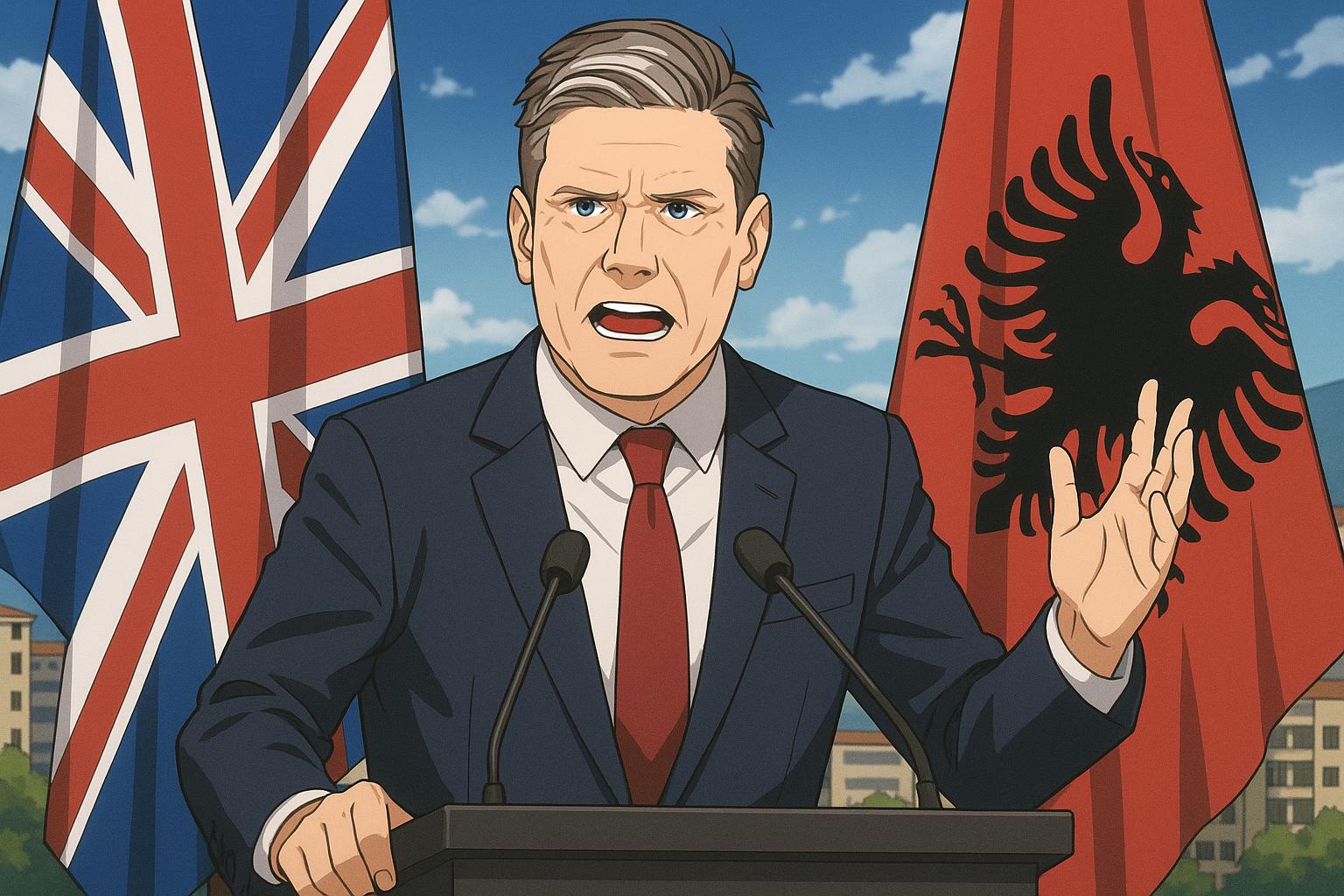During a recent Prime Minister's Questions session, Keir Starmer, leader of the UK Labour party, painted the Conservative party as careening towards "brain-dead oblivion". This provocative remark inadvertently sparked a flurry of outrage among Conservative members, who appeared eager to escalate the rhetoric rather than address pressing issues such as the turmoil over immigration or rising inflation. The day following Starmer's statement, various Tory MPs, led by Richard Holden, expressed their indignation over Downing Street's decision not to fly the Middlesex flag in honour of Middlesex Day. Despite the near-oblivion of the county itself and its flag's obscurity, this outcry became emblematic of the party's fixation on trivial matters, diverting attention from the economic and geopolitical crises facing the nation.
Unperturbed by the Conservative drama, Starmer embarked on a significant diplomatic mission in Tirana, Albania, marking the first time a UK Prime Minister has visited the country. His meeting with Prime Minister Edi Rama sought to bolster bilateral relations, particularly in the context of immigration control strategies. The media anticipated discussions focused on the establishment of "returns hubs" aimed at processing rejected asylum seekers, a mirrored strategy to the UK's former involvement in the now-scrapped Rwanda deportation scheme. However, Rama quashed the notion of Albania acting as a processing centre, expressing that the agreement with Italy was unique and not a model for broader cooperation with the UK. In a climate where immigration strategies are intensely scrutinised, this rejection posed a challenge to Starmer’s agenda.
While Starmer's administration has faced criticism for its immigration policies, including a proposed extension of the waiting period for migrants seeking permanent residency, it claims such measures are necessary to combat organised migration crime, which remains rampant in the Western Balkans. He highlighted that measures to prevent deported Albanian nationals from re-entering the UK and the donation of forgery detection machines would set a precedent for cooperation between nations. Furthermore, the UK plans to expand a joint migration task force to include neighbouring nations like North Macedonia and Montenegro, reflecting a strategic pivot towards regional partnerships in the fight against human trafficking.
The tensions between Starmer’s immigration objectives and the historical context of UK policies are palpable; his proposals attempt to balance a perennial voter demand for stricter immigration control while not alienating potential migrant populations. The UK’s net immigration figures have reached staggering heights in recent years, and the Labour party is under pressure to present a coherent stance that addresses public concerns without undermining economic vitality. Some observers note that while proposals aimed at limiting legal migration may resonate with certain constituencies, they could adversely affect sectors dependent on migrant labour, such as social care and higher education.
Back in the UK, while Starmer was in Albania, Chancellor Rachel Reeves received encouraging news regarding a surprising economic growth of 0.7% in the first quarter of the year, a statistic she wasted no time in promoting as evidence of Labour's economic stewardship. Yet, with challenges like rising tariffs on imports looming on the horizon, the prospect of sustained growth remains uncertain.
The political theatre represents a stark contrast; where Conservative members bicker over symbolic gestures like flag flying, Starmer attempts to weave a narrative of cooperation and control over a vital issue that has plagued British politics for decades. As he navigates the complexities of immigration policy, his approach reflects an awareness of the historic failures of past administrations to adequately address this sensitive topic. Ultimately, the effectiveness of Starmer's visible efforts remains contingent on shifting public sentiment and international cooperation.
Reference Map: 1. Paragraph 1: [1] 2. Paragraph 2: [1], [2], [3] 3. Paragraph 3: [2], [4], [5] 4. Paragraph 4: [6], [7] 5. Paragraph 5: [1], [2], [4], [5] 6. Paragraph 6: [1], [3], [6] 7. Paragraph 7: [2], [5]
Source: Noah Wire Services
